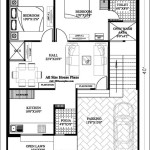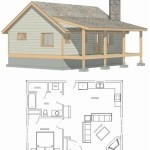Planning Permission to Build a House in Your Garden in San Jose
Building a new house in an existing garden, also known as “garden suites” or “accessory dwelling units (ADUs),” is an increasingly popular option for homeowners in San Jose. This approach can provide additional living space, generate rental income, or accommodate family members. However, building a new dwelling on an existing property necessitates careful consideration of local planning regulations and obtaining the appropriate planning permission.
Navigating the planning permission process in San Jose can be complex, with specific requirements that vary based on zoning regulations, lot size, and the proposed design. This article provides a detailed overview of the key aspects to consider when seeking planning permission to build a house in your garden in San Jose.
The City of San Jose, like many municipalities, has specific zoning ordinances that dictate what types of structures can be built on a property. These ordinances address issues like setbacks, height restrictions, and allowable lot coverage. Understanding these regulations is the foundational step in determining the feasibility of constructing a new house in your garden.
An Accessory Dwelling Unit (ADU) is a self-contained residential unit located on the same property as a primary dwelling. In San Jose, ADUs are governed by specific city ordinances and state laws that aim to encourage their development to address housing shortages. However, these regulations are subject to change, so it's crucial to consult the most up-to-date guidelines from the City of San Jose's Planning Department.
Before embarking on the planning permission process, a thorough assessment of the property's zoning designation is essential. This information can be obtained from the City of San Jose's website or by contacting the Planning Department directly. The zoning code specifies the permitted uses for the property, including whether ADUs are allowed and any specific conditions that apply.
In addition to zoning regulations, the City of San Jose has specific requirements related to building codes, which govern the structural integrity, safety, and energy efficiency of new construction. Compliance with these codes is mandatory to ensure the safety of occupants and the surrounding community.
The process of obtaining planning permission involves submitting a detailed application to the City of San Jose's Planning Department. This application typically includes architectural plans, site plans, and other supporting documentation that demonstrates compliance with all applicable regulations. The application will be reviewed by city planners to ensure that the proposed development meets all requirements.
The planning permission process can be time-consuming, and it's essential to allow ample time for review and potential revisions. The City of San Jose may require multiple rounds of revisions before granting approval. Engaging a qualified architect or planning consultant can significantly streamline the process and increase the likelihood of a successful application.
Key Point 1: Understanding San Jose's ADU Regulations
San Jose has specific ordinances in place to regulate the development of ADUs. These regulations address various aspects of ADU design and construction, including size limitations, setback requirements, parking regulations, and utility connections. Failure to comply with these regulations can result in the denial of planning permission.
One crucial aspect of San Jose's ADU regulations is the size limitation. The maximum allowable size of an ADU typically depends on the size of the primary dwelling and the lot size. Generally, smaller lots or those with smaller primary dwellings may have more restrictive size limitations for ADUs.
Setback requirements dictate the minimum distance that an ADU must be located from property lines. These setbacks are designed to protect the privacy and amenity of neighboring properties. The specific setback requirements vary depending on the zoning district and the location of the ADU relative to the primary dwelling.
Parking regulations are another key consideration. The City of San Jose may require additional parking spaces to be provided for the ADU, depending on its size and location. However, certain exceptions may apply, such as when the ADU is located within a specified distance of public transportation or when the owner agrees to restrict occupancy to tenants who do not own vehicles.
Utility connections, such as water, sewer, and electricity, must be properly planned and installed to serve the ADU. The City of San Jose may require separate utility meters for the ADU, or it may allow the ADU to share utilities with the primary dwelling. The specific requirements depend on the individual circumstances of the property.
Furthermore, the City of San Jose may have design guidelines for ADUs, which aim to ensure that new ADUs are compatible with the existing character of the neighborhood. These guidelines may address architectural style, building materials, and landscaping.
Key Point 2: Preparing a Comprehensive Planning Application
A well-prepared planning application is crucial for obtaining planning permission to build a house in your garden. The application should include all the necessary documentation and information to demonstrate compliance with all applicable regulations.
The key components of a planning application typically include architectural plans, site plans, and a written statement describing the proposed development. Architectural plans should include detailed drawings of the ADU, including floor plans, elevations, and sections. The site plan should show the location of the ADU on the property, as well as the location of existing structures, property lines, and parking areas.
The written statement should provide a clear and concise description of the proposed development, including its purpose, size, and design. It should also address any potential impacts on the surrounding neighborhood and explain how these impacts will be mitigated.
In addition to these core documents, the planning application may also need to include other supporting documentation, such as a soil report, a drainage plan, and an environmental assessment. The specific requirements depend on the nature of the proposed development and the location of the property.
It's highly recommended to engage a qualified architect or planning consultant to assist with the preparation of the planning application. These professionals have the expertise to ensure that the application is complete, accurate, and compliant with all applicable regulations.
A thorough and well-prepared planning application can significantly increase the likelihood of a successful outcome and minimize delays in the planning permission process.
Key Point 3: Navigating the Review and Approval Process
Once the planning application is submitted, it will be reviewed by the City of San Jose's Planning Department. The review process typically involves multiple stages, including an initial review for completeness, a detailed technical review, and a public hearing (if required).
During the initial review, the city planners will check to ensure that the application includes all the necessary documentation and that it meets the basic requirements of the zoning regulations. If the application is incomplete or deficient, the applicant will be notified and given an opportunity to make corrections.
The detailed technical review involves a more in-depth assessment of the proposed development, including its compliance with building codes, environmental regulations, and other applicable standards. The city planners may request additional information or clarification from the applicant during this stage.
In some cases, the City of San Jose may require a public hearing to allow members of the public to comment on the proposed development. This is more likely to occur if the project is controversial or if it has the potential to significantly impact the surrounding neighborhood. Neighbors are notified of the proposed project and given an opportunity to submit comments and concerns.
The applicant has the opportunity to respond to any concerns raised by the public and to make revisions to the project to address these concerns. The Planning Commission or other decision-making body will then consider all the evidence and make a decision on the application.
If the planning application is approved, the applicant will be granted planning permission to build the ADU. The applicant must then obtain building permits and comply with all other applicable regulations before commencing construction.
The review and approval process can be time-consuming, and it's essential to be patient and responsive to the city planners' requests. Engaging a qualified architect or planning consultant can help to navigate the process effectively and minimize delays.
It is important to note that the planning permission process can be complex and can vary depending on the specific circumstances of the property and the proposed development. It is always recommended to consult with the City of San Jose's Planning Department and qualified professionals to ensure compliance with all applicable regulations.
Building a house in your garden in San Jose is possible, but it requires careful preparation, attention to detail, and a comprehensive understanding of the local planning regulations. With the right approach, homeowners can successfully navigate the planning permission process and create valuable additional living space on their property.

The Ultimate Guide To Pre Approved Adu Plans In San Jose Acton

Home Department Of Planning And Development County Santa Clara

The Ultimate Guide To Building An Accessory Dwelling Unit Acton Adu
States Will Pay You For Building A Tiny Home In Your Backyard Business Insider
Green Building City Of San José

San Jose Permit Expediter And Compliance Building Code Consultants
Green Building City Of San José

Winchester Mystery House 2025 All You Need To Know Before Go With Reviews

Historic Hayes Mansion In San Jose Carves Out Hotel Niche Post Covid

New Construction Homes In San Jose Ca Zillow








